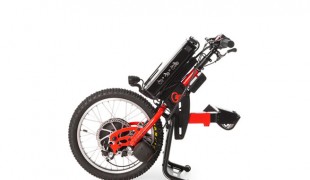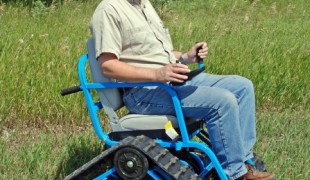- 5326
- 375
- 8
- 11
- 0
- Help Ukraine
About the solution
Tim Squires established the TJS Snookerbility charity in 2011 at the Haverhill Ex Sercicemen’s Club and became a World Snooker coach. Tim came up with a new snooker rest after seeing wheelchair users struggling to judge how far their cue was from the cue ball when using a normal rest.
Tim created a prototype of his invention and it was used for the first time at World Disability Billiards and Snooker regional tournament in 2016.
“The rest replaces your bridge hand but you’ve got no way of judging how far the cue tip is away from the cue ball. An able bodied player sees the shadow on the cue on the table but a wheelchair player can’t see the shadow (because they sit too low down) so they’ve not got that ability to judge and gauge, they can’t do it. I thought — how can I get that shadow?” Tim said.
The new rest has an LED and a power cable running to its opposite end where an on/off button is fitted and enables the player to put a shadow on the cue ball.
“The closer you get to the cue ball, the smaller the shadow is. Then they can work out the distance that the tip needs to be and they can start doing their final preparation to strike the cue ball. This is like a guide path to where they need to be for the cue ball. It helps them to adjust to where they need to be. This has not been done before but it started here, in Haverhill,” Tim said.
Adapted from: https://www.haverhillecho.co.uk/sport/haverhill-snooker-coach-invents-ne...
This solution shall not include mention to the use of drugs, chemicals or biologicals (including food); invasive devices; offensive, commercial or inherently dangerous content. This solution was not medically validated. Proceed with caution! If you have any doubts, please consult with a health professional.
DISCLAIMER: This story was written by someone who is not the author of the solution, therefore please be advised that, although it was written with the utmost respect for the innovation and the innovator, there can be some incorrect statements. If you find any errors please contact the patient Innovation team via info@patient-innovation.com
-
-
247
-
0
-
2722

Collaborator James Leckey makes equipment to improve the quality of life and social inclusion of children with special needs
MOVING IN A WHEELCHAIR: Moving using a wheelchair.
BODY BALANCE: Maintaining body balance
STANDING UP: Standing up from a seated position
Playing
Neuromuscular Disorders
Assistive Daily Life Device (to help ADL)
Walking Aid (wheelchair/walker/crutches)
Assistive Technology access
5 Senses support devices: (glasses, hearing aids, headphones...)
Restoring mobility
Promoting self-management
Managing Neurological Disorders
Promoting inclusivity and social integration
Maintaining Balance and Mobility
Raise awareness
General and Family Medicine
Neurology
Orthopedics
Pediatrics
Physical Medicine and Rehabilitation
United States
-
-
-
264
-
0
-
4605

Tetraplegic develops add-on handbikes
MOVING IN A WHEELCHAIR: Moving using a wheelchair.
Spinal Cord and Nerve Root Disorders
Paralysis
Cervical spinal cord injury/Tetraplegia
Assistive Daily Life Device (to help ADL)
Walking Aid (wheelchair/walker/crutches)
Muscle cramps or spasms
Stiffness or rigidity (difficulty moving)
Paralysis of the legs and lower body
Muscle weakness
Promoting self-management
Promoting inclusivity and social integration
Preventing (Vaccination, Protection, Falls, Research/Mapping)
Neurology
Orthopedics
Spain
-
-
-
422
-
0
-
6342

Parents create a track-chair for their paralysed son
MOVING IN A WHEELCHAIR: Moving using a wheelchair.
CAREGIVING
Paralysis
Neuromuscular Disorders
Walking Aid (wheelchair/walker/crutches)
Assistive Daily Life Device (to help ADL)
Gait abnormalities (e.g., walking difficulties, unsteady gait)
Difficulty coordinating movements
Stiffness or rigidity (difficulty moving)
Paralysis of the legs and lower body
Muscle weakness
Loss of balance
Promoting inclusivity and social integration
Maintaining Balance and Mobility
Preventing (Vaccination, Protection, Falls, Research/Mapping)
Caregiving Support
Neurology
Neurosurgery
Orthopedics
Rheumatology
United States
-
 en
en